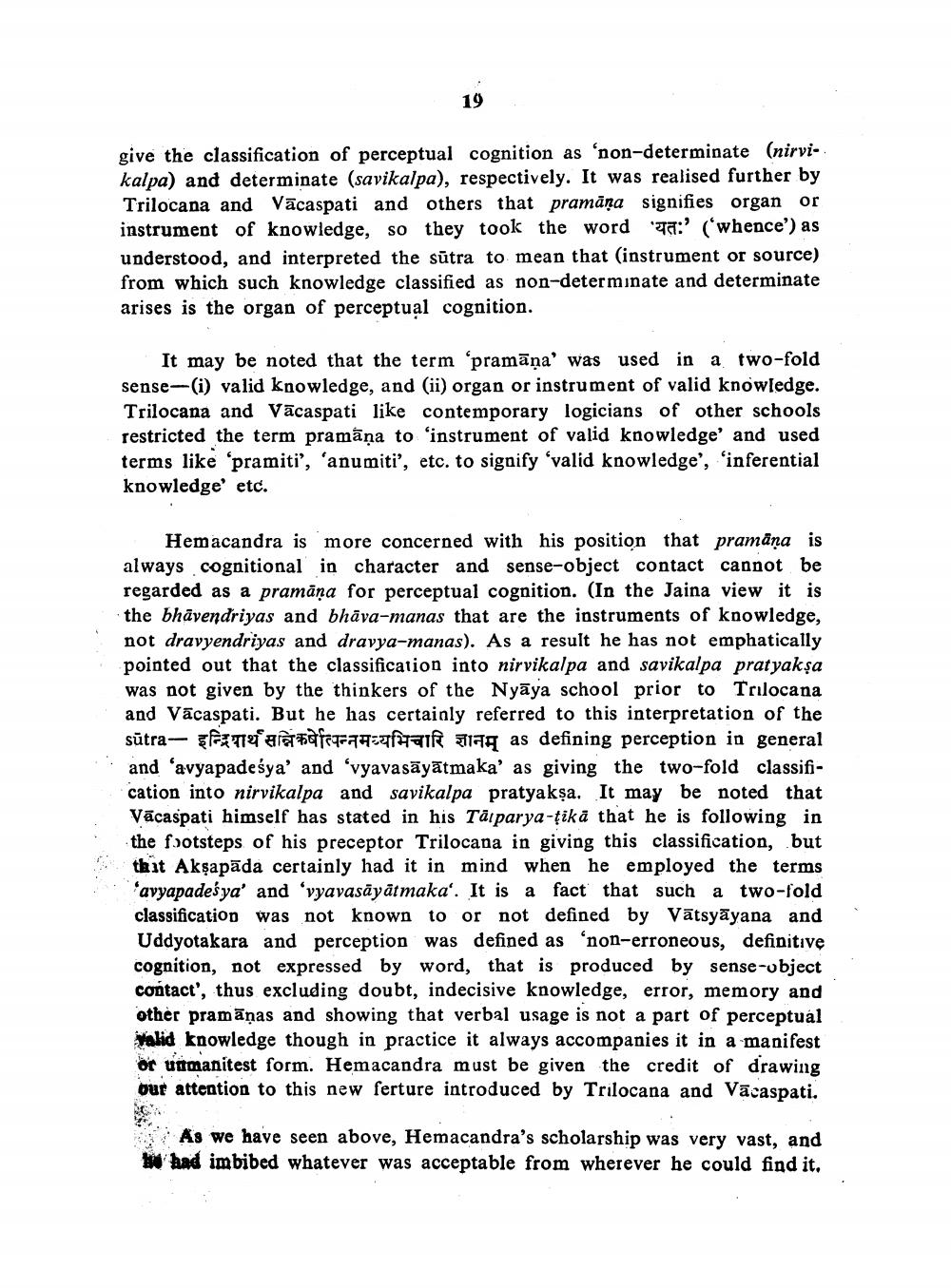________________
19
give the classification of perceptual cognition as 'non-determinate (nirvikalpa) and determinate (savikalpa), respectively. It was realised further by Trilocana and Vacaspati and others that pramāņa signifies organ or instrument of knowledge, so they took the word ':' (whence') as understood, and interpreted the sutra to mean that (instrument or source) from which such knowledge classified as non-determinate and determinate arises is the organ of perceptual cognition.
It may be noted that the term 'pramaņa' was used in a two-fold sense-(i) valid knowledge, and (ii) organ or instrument of valid knowledge. Trilocana and Vacaspati like contemporary logicians of other schools restricted the term pramaņa to 'instrument of valid knowledge' and used terms like 'pramiti', 'anumiti', etc. to signify 'valid knowledge', 'inferential knowledge' etc.
Hemacandra is more concerned with his position that pramana is always cognitional in character and sense-object contact cannot be regarded as a pramana for perceptual cognition. (In the Jaina view it is the bhavendriyas and bhava-manas that are the instruments of knowledge, not dravyendriyas and dravya-manas). As a result he has not emphatically pointed out that the classification into nirvikalpa and savikalpa pratyaksa was not given by the thinkers of the Nyaya school prior to Trilocana and Vacaspati. But he has certainly referred to this interpretation of the sūtra— इन्द्रियार्थं सन्निकर्षोत्पन्नमव्यभिचारि ज्ञानम् as defining perception in general and 'avyapadesya' and 'vyavasayātmaka' as giving the two-fold classification into nirvikalpa and savikalpa pratyakşa. It may be noted that Vacaspati himself has stated in his Tarparya-tika that he is following in the footsteps of his preceptor Trilocana in giving this classification, but that Akṣapada certainly had it in mind when he employed the terms avyapadesya' and 'vyavasāyātmaka'. It is a fact that such a two-fold classification was not known to or not defined by Vatsyayana and Uddyotakara and perception was defined as 'non-erroneous, definitive cognition, not expressed by word, that is produced by sense-object contact', thus excluding doubt, indecisive knowledge, error, memory and other pramanas and showing that verbal usage is not a part of perceptual Valid knowledge though in practice it always accompanies it in a manifest or unmanitest form. Hemacandra must be given the credit of drawing our attention to this new ferture introduced by Trilocana and Vacaspati.
As we have seen above, Hemacandra's scholarship was very vast, and had imbibed whatever was acceptable from wherever he could find it.




